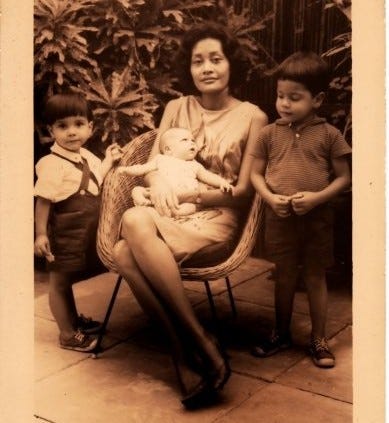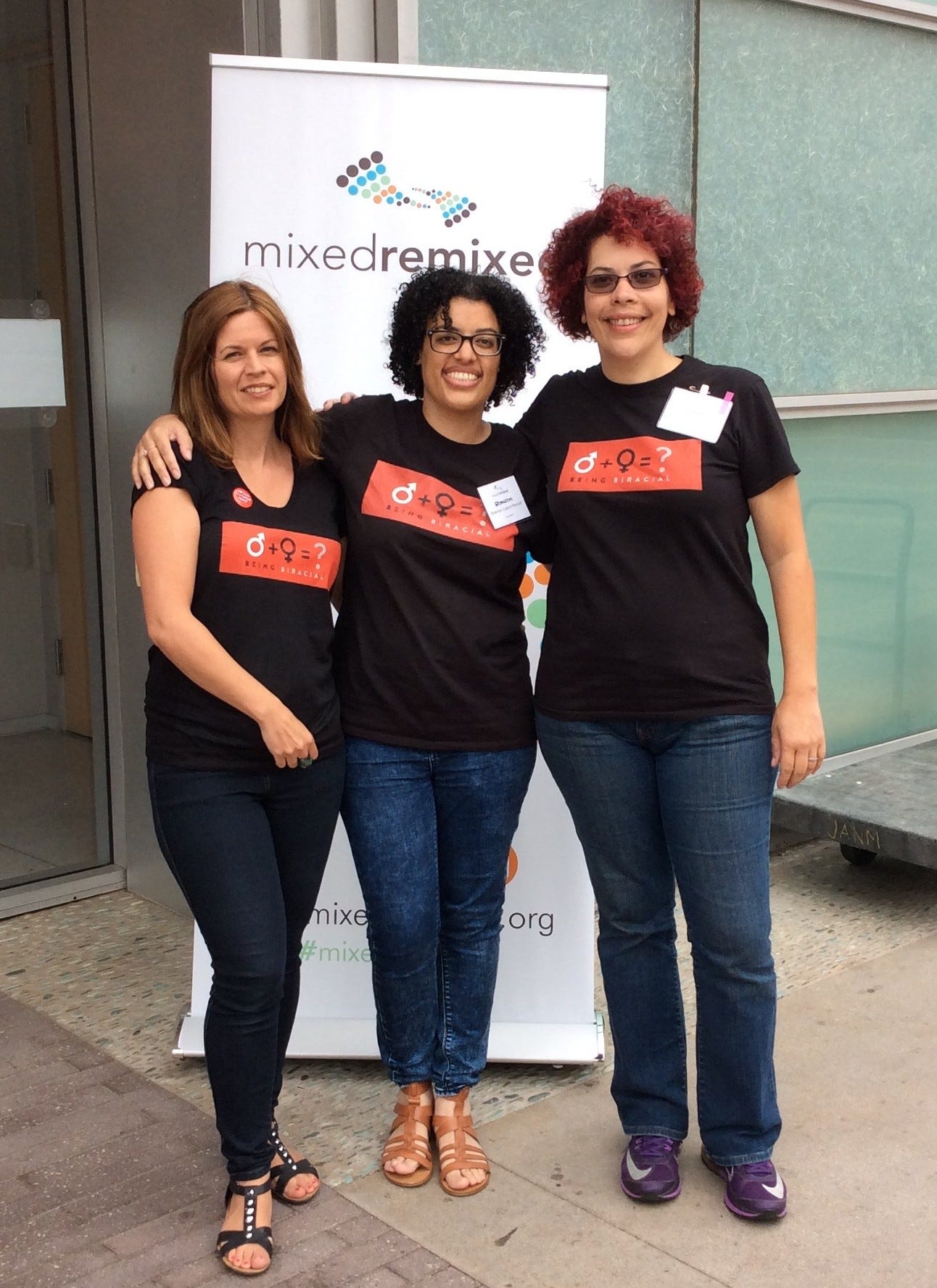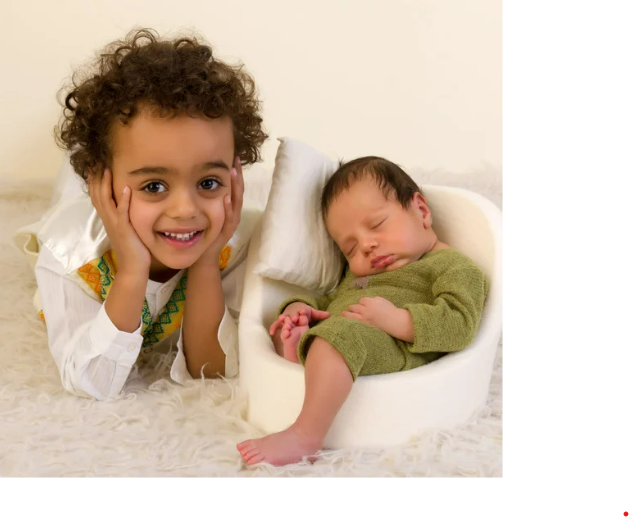BIG NEWS: New Volume of 'Being Biracial: Where Our Secret Worlds Collide' Explores Race and Identity Within Families!
Do YOU Have a Story to Share?
Fam,
It has been my lifelong observation and experience that Mixed-race siblings often identify differently in terms of racial, ethnic, or cultural preferences, loyalties, and affinities.
So, I am delighted to share that the very dynamic and multitalented writer, editor, writing coach, and independent book publisher Sarah Ratliff is creating an anthology to explore this and other Mixed family dynamics in honor of the 10th anniversary of the groundbreaking book, Being Biracial: Where Our Secret Worlds Collide, which she created with Byrony Sutherland.
“Being Biracial was/ is a bold, unflinching anthology that explored the complex realities of living between racial and cultural identities,” Sarah explains. “Through 26 deeply personal essays, contributors from five continents shared our experiences of love, loss, belonging, confusion, code-switching, pride, and resistance.”
Raw, reflective, and at times humorous, Being Biracial was both a mirror for those who live this complexity and a window for those who seek to understand it. – Sarah
Being Biracial Vol. 1 explored, as Sarah describes, “the complex realities of living between racial and identities by asking, ‘What does it mean to belong everywhere and nowhere all at once?’” from a rich array of contributors.
“Our voices were diverse—Black, white, Asian, South Asian, Indigenous, Latino, Arab, Jewish, and everything in between. Some writers were Multiracial adults navigating identity in societies that demand simplicity. Others were Monoracial parents raising Mixed-race children in a world that questions family validity for those who aren't white alone,” Sarah says. “But we all spoke the same truth: race isn’t binary, identity isn’t fixed, and being Biracial is anything but simple.”
10 Years Later: A Follow-Up with a Twist
Sarah describes the evolution that sparked the creation of the second volume: Being Biracial: Exploring Race and Identity Within Families, for which she is now accepting submissions.
“As I approach the 10-year anniversary of Being Biracial, my views on race have changed, but I'm still just as opinionated. I have returned with a powerful new volume—this time as the sole author, and with a compelling twist. The new book will continue to explore the Multiracial experience, but through a more intimate lens: Do members of the same Mixed-race family view their racial makeup the same? Not always.
“This second volume will dive deeply into the Multiracial perspective within families, where siblings may navigate identity in completely different ways, and parents and children don’t always share the same racial lens. It will unpack how external perception, internal processing, skin tone, gender, and upbringing can all collide—even within the same household. In Volume 1 asked, ‘Who am I’” Volume 2 asks, “How can we share blood and not always have the same racial truths as my family members?”
Get to Know Sarah
Sarah Ratliff is a writer, editor, book publisher and organic farmer. Much of her writing explores the intersections of race, identity, and belonging. She is the co-creator of Being Biracial: Where Our Secret Worlds Collide, an anthology featuring 26 voices from across the globe.
A Multiracial woman herself—Black, Japanese, and white—Sarah draws from her lived experience to amplify complex, nuanced stories. Nearly a decade after the first book’s release, she is curating Volume 2, focusing on how race and identity play out within Multiracial families. Apart from Being Biracial, Sarah's writing has appeared in Blavity, USC's Center for Health Journalism, The Village Voice, Merry Jane, Entrepreneur Magazine, The Village Voice, LA Weekly, Green America, Civil Eats and Mother Earth News and AAANortheast.

When Sarah isn't behind her keyboard, she can be found either in the 15-acre organic farm in the mountains of Puerto Rico she owns with her husband of 25 years or teaching English at CampoSofia, a Waldorf school.
Q: What was the impact of Being Biracial: Where Our Secret Worlds Collide?
A: Much bigger than my co-author, Bryony Sutherland, or I ever anticipated. I am not sure if we were confident we'd sell even one copy but we sold a heck of a lot more. We were interviewed on a few podcasts, including Alex Barnett's Multiracial Family Man. We submitted an entry to be included at the 2016 Mixed Remixed festival in Los Angeles and were happily surprised to be accepted. This allowed Bryony and me to meet in person.
Alex would later ask me to co-create Multiracial Media with him. This celebrated the Mixed-race experience through art, writing, acting and music. It was pretty cool to be part of many important conversations, that is until Hurricane Maria devastated Puerto Rico in September 2017. My husband and I lost half our farm and that meant I had to shift priorities.
Q: How would you say that you and your views on race and identity have changed over the years?
A: I still identify the same: as a Black woman first, Multiracial second. It's an odd thing within my own family because my unambiguously Black brother identifies as white. The only thing that's different about the way I identify is that the more I move away from the material world in favor of agriculture and teaching at a local Waldorf school, the more I realize how much smaller my world is and how little it matters in my little world.
For context, my husband and I own a 15-acre farm in the interior of Puerto Rico, where we grow our own food and raise animals. After 15 years doing organic farming, we have a consulting business in which we help people new to organic growing in the tropics set up their edible forests.
Given this, with a brain only so big, I don't have the room to be as involved with politics the way I once was. This was huge for me because during the Being Biracial years, I was very politically active, which meant being knowledgeable about both U.S. politics and those in Puerto Rico. It was exhausting, particularly since I wasn't seeing my activism bearing any fruit.
Things weren't changing here or "up there," so I had to make a choice to step away from being so involved. In doing so, I spent much less time thinking about race. Indeed this is a privilege to be able to say this. Racism, although present in Puerto Rico, isn't nearly the issue it is in the States, where I worried every night that my Black husband wouldn't make it home.

These aren't concerns anymore. So while a privilege for me to turn my attention away from politics, I feel I am doing more good helping people feed themselves, given the political dynamics and uncertainties of our times. People are genuinely scared, and Americanos are moving to Puerto Rico in record numbers hoping to free themselves from the uncertainty on the one hand and the Matrix on the other end of the spectrum.
I love teaching English and writing at a local Waldorf school, and love the curriculum, founded by a Biracial woman of Black and Indian (South Asian) descent. This school has attracted families and faculty from all over, including Denmark, Kenya, Argentina, St. Kitts and South Africa. And I love that within the English curriculum, I have the freedom to teach about real history that’s not made up by the perpetrators of imperialism, slavery and colonialism, along with nature, non-biased ideology and art history. Next semester, I am going to introduce the kids to spoken word poetry, which is a nice way to get them to express themselves.
Because my school is so integrated with respect to race and culture, many of the topics I used to jump into and crave are just non-topics. We all are just ... us. And when my husband and I go to advise clients, race isn't part of the equation, oddly even among newly transplanted Americanos. It's truly been refreshing while it reinforces my belief to stay out of the material world as much as possible.
“What I want to do differently with volume 2 of Being Biracial is focus on the family. How do siblings from the same Mixed-race family identify?” — Sarah
These aren't concerns anymore. So while it is a privilege for me to turn my attention away from politics, I feel I am doing more good serving the community in equally important ways: helping people feed themselves, given the uncertainty of our future amid political shifts, removal of DEI, more strife, more economic downturns and more of the same. People are genuinely scared and the influx of Americanos to Puerto Rico proves this. Folks are moving here in record numbers hoping to free themselves from the uncertainty on the one hand and the Matrix on the other end of the spectrum.
Q: As we know, ongoing public conversations about Mixed people and our identities are much more common than they were a decade ago when your first book came out. What are you hoping that this new volume adds to the current conversations?
A: What I want to do differently with volume 2 of Being Biracial is focus on the family. How do siblings from the same Mixed-race family identify? Race, as we know, is complex and how we identify can be as much influenced by how we're raised, by whom we're raised and the neighborhood in which we were raised as it is by how we look. Hence why I, who has been assumed to be anything from South Asian mixed with Persian, Filipina, Puerto Rican, light complected Black and white, can identify as Black, whilst my unambiguously Black-presenting brother can identify as white.
What I hope to achieve with this book is to get people talking not just about the singular Multiracial and Biracial experience but the nuclear one. Monoracial parents don't always agree on how their Biracial and Multiracial kids should identify. Sometimes they’re not aware how by not having these conversations early and often with their kids, they're setting their kids up for anything from awkwardness to potentially dangerous situations. "Mommy, why did the cop stop and frisk me?" "Daddy, why did the mother of my girlfriend tell me I'm no longer welcome in her home?" "Why does everyone assume I'm a racist simply because I look white? Don't they know I'm mixed?"
And for kids growing up in the same home, it's not a given all will identify the same way. Some are naturally curious and will want to explore all of their races and ethnicities while others take a more "whatever" approach. I was the former, whilst my brothers (the other looked somewhere between Japanese and Filipino) never felt the need to define themselves until they began dating. Perhaps they were motivated by different things than I was. I was curious why I was routinely treated differently from them. I wondered why opportunities presented themselves to me that weren't available to my brothers. This sent me on a lifelong quest to get answers, and to my belief that to identify as anything but Black was disingenuous to the Black community and only served to push my privilege in their faces.
The Being Biracial reboot aims to get all perspectives without judgment. I don't judge my brothers because they weren't motivated to seek the answers I did but I would like to get that conversation started with other families.
Want to Contribute to Being Biracial, Vol. 2?
If you're interested in contributing an essay to Being Biracial: Where Our Secret Worlds Collide Volume 2, 10 Years Later, and your essay can fall within these parameters (if you have a sibling and/or a parent who'd be willing to write their own essay to complement yours, even better), please reach out to me at: sarah@beingbiracial.com.










I’m thrilled to have happened on this! My husband (deceased) & I (both white) adopted our first biracial (black /white) child in 1972. Ended up adopting three more. Today all of my 5 adult grandchildren are brown. Oldest biracial grandson (bio) is married to a white girl and their kids look white. I’ve lived a fascinating life. I feel black but look white. Can’t wait to read more of you stuff.